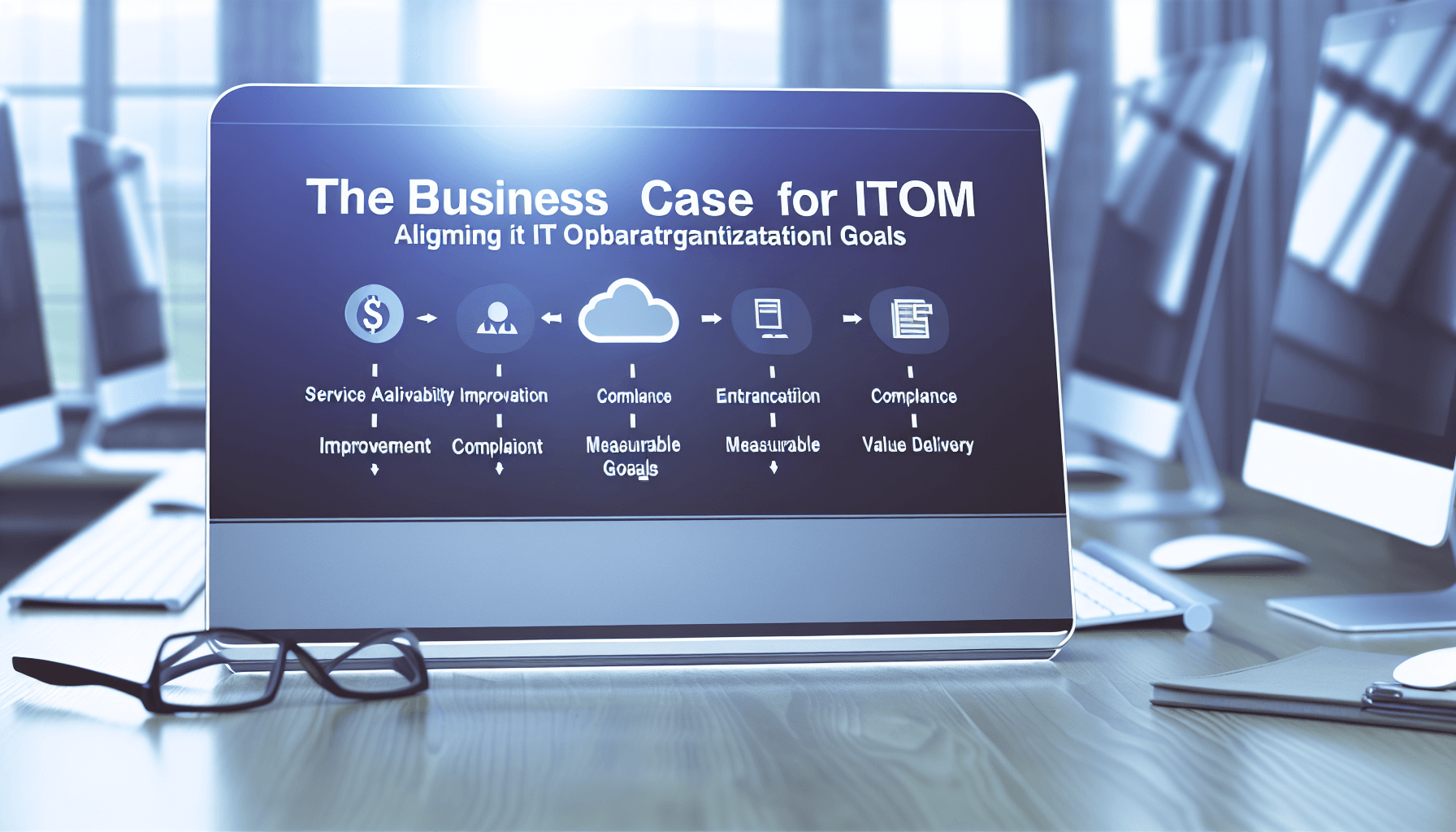How Automation Enhances Compliance Audits in IT Operations

Keeping up with regulations is no longer solely the responsibility of the legal team, today, compliance touches every aspect of IT operations. In Latin America, companies face increasing pressure to align their processes with international standards such as ISO 27001, data protection laws, and local financial regulations. Non-compliance can lead to penalties, reputational damage, and critical security breaches.
In this context, automation emerges as a key tool. It's no longer just about efficiency, it's about strategy. Automating compliance processes, from data collection to report generation, reduces errors, minimizes manual effort, and accelerates audits that were once tedious and costly. The result: stronger, more traceable IT environments that are ready to meet any regulatory requirement.
This article explores how automation can strengthen compliance in IT operations. You'll find concrete examples, operational benefits, and practical steps to get started.
Understanding the Challenges: Why Compliance Audits Are So Daunting
For many IT teams and business leaders, compliance is synonymous with stress, complex reporting, evolving frameworks, countless evidence requirements, and ever-present threats of non-compliance penalties. Key hurdles commonly include:
- Manual Documentation: High error rates, inconsistent formats, and time-consuming data collection practices.
- Volume and Complexity of Regulations: Navigating overlapping rules across multiple jurisdictions, especially for regional enterprises.
- Manual Documentation: High error rates, inconsistent formats, and time-consuming data collection practices.
- Poor Traceability: Difficulty tracking who made changes, when, and why, leading to audit trail gaps.
- Resource Constraints: Limited personnel to manage repetitive, detail-oriented compliance workloads.
- Reactive Approaches: Scrambling to pull evidence together right before an audit, increasing stress and the likelihood of missed items.
Traditional manual workflows may have sufficed in the past, but as digital infrastructure and data privacy regulations grow more robust, these legacy methods put organizations at risk. That’s where automation steps in.
How Automation for Compliance Transforms IT Audit Processes
Automating compliance isn’t about replacing humans, it’s about enabling your workforce with consistent, reliable tooling to reduce risk, save time, and drive operational excellence. Here’s how automation for compliance specifically enhances IT audit workflows:
- Consistent Documentation: Automated systems ensure that logs, configurations, and change records are captured in standardized formats, creating a trustworthy audit trail with minimal manual intervention.
- Error Reduction: Process automation removes the human-element from repetitive tasks (like checklist validation or user provisioning), lowering the risk of mistakes that could trigger audit flags.
- Real-Time Monitoring and Alerts: Automated monitoring spots compliance drifts or suspicious activities as they occur, giving teams a chance to respond proactively, before they show up in an audit finding.
- Scalable Workflows: Automation handles growing volumes of assets and data without overburdening IT staff, allowing organizations to expand smoothly while staying compliant.
- Improved Traceability: Audit logs generated through automated systems are accurate and tamper-evident, making it straightforward to track access, policy changes, or security incidents.
As enterprises in Latin America accelerate digital transformation, these benefits translate directly into less stress during compliance cycles and more confidence in every external or internal audit.
Key IT Compliance Areas That Benefit from Automation
Not all components of IT audits can or should be automated, but many recurring pain points can be substantially improved. Consider the most common areas where IT audit automation brings immediate gains:
- User Access Reviews: Automatically generating access control reports, detecting unused accounts, and alerting teams to suspicious permission escalations.
- Configuration Management: Monitoring configuration baselines and alerting staff to unauthorized changes or policy drifts in servers, databases, or network equipment.
- Patch and Vulnerability Management: Detecting unpatched assets, prioritizing remediation, and documenting patching activity for auditors, without manual intervention.
- Change Management: Enforcing documented, approved workflows for IT changes, automatically logging rationale, approvals, and implementation details.
- Data Protection and Backups: Scheduling automated backups, verifying successful execution, and generating compliance-ready backup logs.
- Incident Response: Automated alerting, incident ticketing, and post-incident evidence collection streamline the audit trail for security incidents.
By automating these critical compliance workflows, IT teams reduce bottlenecks, boost reliability, and ensure that their audit posture evolves in step with both business expansion and the regulatory landscape.
Illustrative Tools and Technologies for IT Audit Automation
Choosing the right tools is key to a successful automation initiative, and there is no shortage of robust solutions tuned for compliance workflows. Here are a few illustrative options widely used by Latin-American and Caribbean enterprises:
- Config Management and Monitoring: Tools like Ansible, Puppet, and SaltStack enable declarative configuration management and automated compliance scanning. They can automatically detect mismatches between actual system state and required policies, generating reports for auditors.
- SIEM and Log Management: Security Information and Event Management (SIEM) platforms, such as Splunk or IBM QRadar, collect logs from across the environment, automate compliance monitoring, and generate real-time alerts and compliance dashboards.
- ITSM Platforms: Modern IT Service Management solutions like ServiceNow or Freshservice provide workflow engines to enforce change management, record approvals, and auto-generate audit evidence for every ticketed event.
- Identity and Access Management (IAM): Solutions like Okta or Azure AD automate provisioning/deprovisioning based on standardized policies, simplifying user access reviews and supporting compliance with data privacy mandates.
- Automated Backup and DR Tools: Backup platforms such as Veeam and Acronis schedule, validate, and document all backup activity, presenting clean logs to auditors and ensuring compliance with business continuity mandates.
- Vulnerability Scanning: Tools like Nessus, Rapid7, or OpenVAS automate regular vulnerability assessments, providing actionable remediation plans alongside audit-ready summaries.
These are just starting points. Most platforms integrate with broader compliance management solutions, allowing businesses to design compliance workflows tailored to specific industries (such as financial services, healthcare, or government) and regulatory requirements.
Practical Steps to Integrate Automation into Your Compliance Workflows
Implementing automation for compliance is a journey, one that yields the best results when approached in structured steps, tailored to your organization’s unique risks, needs, and resources. Here’s a proven methodology for Latin America enterprises aiming to deploy IT audit automation in IT operations:
- Map Current Compliance Processes: Document how audits are currently performed, where manual effort is concentrated, and where the biggest risks of error or delay appear.
- Set Clear Automation Objectives: Prioritize audit pain points (e.g., user access reviews, change management logs, patch documentation) and define measurable outcomes for automation (e.g., reduce time spent on evidence gathering by 50%).
- Select Appropriate Tools: Assess whether existing IAM and ITSM tools, or monitoring tools support your compliance automation needs, or if you require new capabilities. Look for integrations and compliance reporting features.
- Build Incremental Automations: Start automating high-frequency, low-risk tasks first, then scale up to more complex compliance activities as your team gains confidence.
- Validate and Test: Run periodic audits on your automated workflows. Verify that logs, alerts, and reports are accurate, complete, and auditor-ready.
- Train Staff and Stakeholders: Ensure your team understands new automated workflows, the rationale behind them, and how to respond to alerts or workflow exceptions.
- Continuously Improve: Monitor evolving regulations and audit requirements. Adjust automation rules and reporting templates as needed, staying ahead of new compliance demands.
By following these practical steps, organizations not only make compliance less painful, they build lasting resilience and establish themselves as proactive leaders in IT operations best practices.
Special Considerations for Enterprises in Latin America
While the benefits of IT audit automation are universal, enterprises across Latin America face several unique compliance and operational realities that shape strategy:
- Local Regulations and Industry Standards: Keep abreast of in-country frameworks, such as Brazil’s LGPD or Mexico’s data privacy laws, alongside regional directives and sector-specific mandates (e.g., PCI DSS for finance).
- Multi-Jurisdictional Operations: For businesses with presence across borders, harmonizing compliance workflows is critical. Automation tools should allow customizable policies per region to avoid “one-size-fits-all” pitfalls.
- Resource Constraints: Smaller or growing enterprises may lack large IT teams or compliance departments. Cloud-based automation and SaaS platforms offer the scalability and efficiency needed without heavy infrastructure investment.
- Regulatory Change: Latin America is witnessing rapid evolution in compliance requirements. Automated compliance workflows must be agile, with easily editable rules, to keep pace.
- Multilingual and Multicultural Teams: Ensure user interfaces, reports, and training materials are available in Spanish, Portuguese, or English as needed, to break down barriers and establish shared compliance culture.
By building automation strategies with these characteristics in mind, regional businesses gain the agility required to thrive in a competitive and tightly regulated market.
Best Practices for Sustaining Reliable, Auditable IT Operations Through Automation
To maximize the value and reliability of automation for compliance, enterprises should embrace several IT operations best practices:
- Embed Compliance Into Daily Operations: Treat compliance as an ongoing, integrated part of everyday IT processes, not just an occasional crisis. Automation makes this shift realistic by handling evidence gathering and documentation continually.
- Centralize and Secure Audit Logs: Store all compliance evidence and audit logs in a secure, centralized repository with controlled access and regular backups.
- Leverage Dashboards and Real-Time Reporting: Use dynamic dashboards to monitor compliance status and operational risks at a glance, empowering timely interventions.
- Periodic Self-Audits: Use automated checks to simulate audits before actual ones, identifying and correcting issues proactively.
- Document Everything: Ensure that every automated workflow, policy change, and evidence collection routine is well-documented, so both IT staff and auditors can understand the process.
- Engage with Auditors Early: When planning new automation initiatives, solicit feedback from auditors on expected documentation formats and reporting requirements.
These best practices help organizations create a culture of continuous compliance, where surprises are rare and audit outcomes are consistently positive.
Seize the Advantages of Automation in Your Compliance Journey
Compliance doesn’t have to be a reactive and stressful burden. With automation, companies have the opportunity to move beyond late-stage corrections and adopt a proactive, efficient approach aligned with global standards. This transformation not only increases productivity and reduces errors but also strengthens transparency, accountability, and trust with auditors, customers, and regulatory bodies.
Automating compliance workflows means having real-time traceability, audit-ready evidence, and clearer visibility into who did what and when. Instead of fearing audits, organizations can begin to see them as validation checkpoints that drive continuous improvement.
The next step is clear: assess your current processes, identify bottlenecks, and determine which tools, whether part of your ITSM, access management solutions, or specialized platforms, can support automation.
Investing in automation today lays the foundation for sustainable, reliable, and surprise-free compliance. Is your company ready to turn audits into a competitive advantage? The time to start is now.















